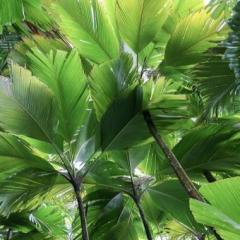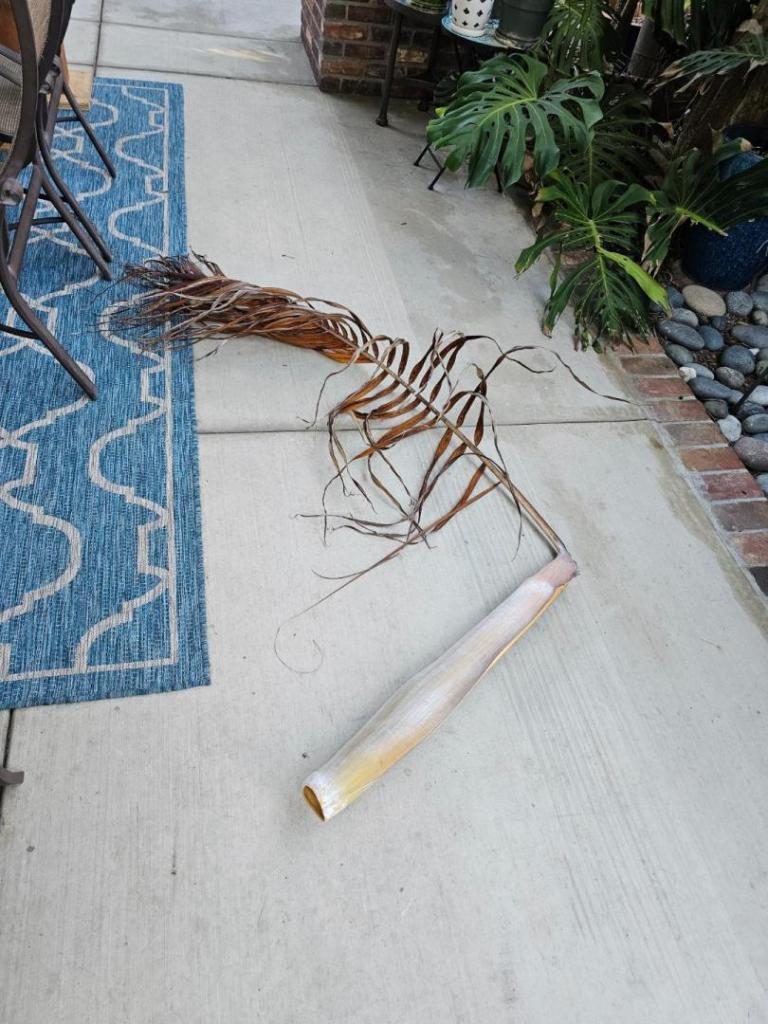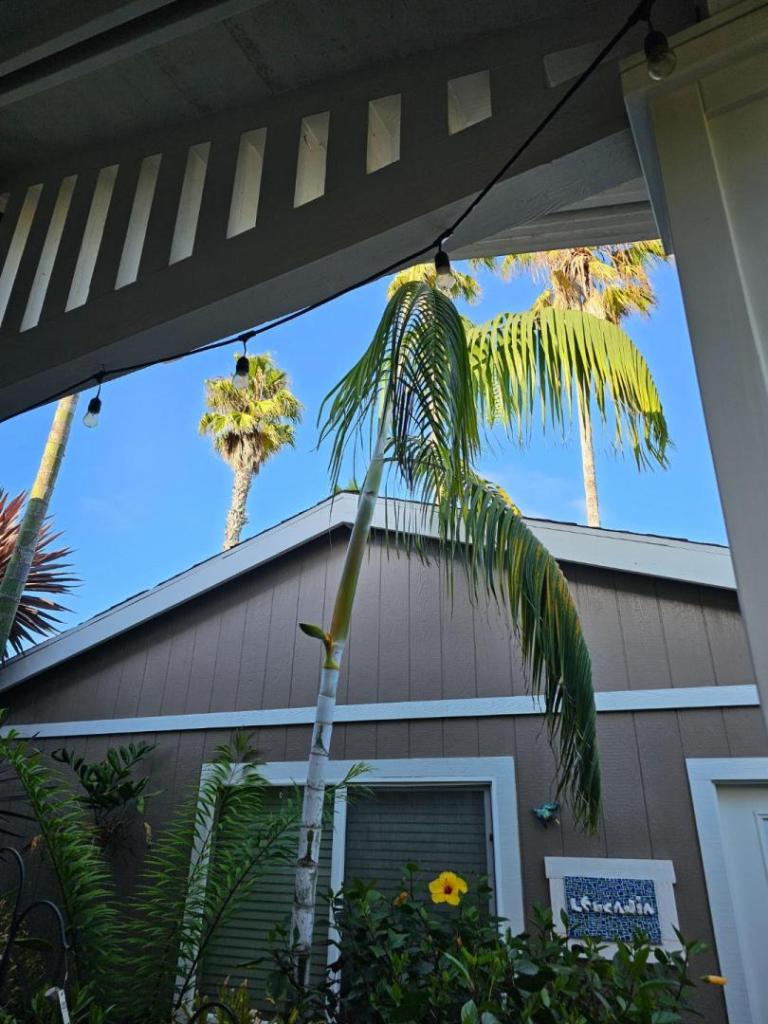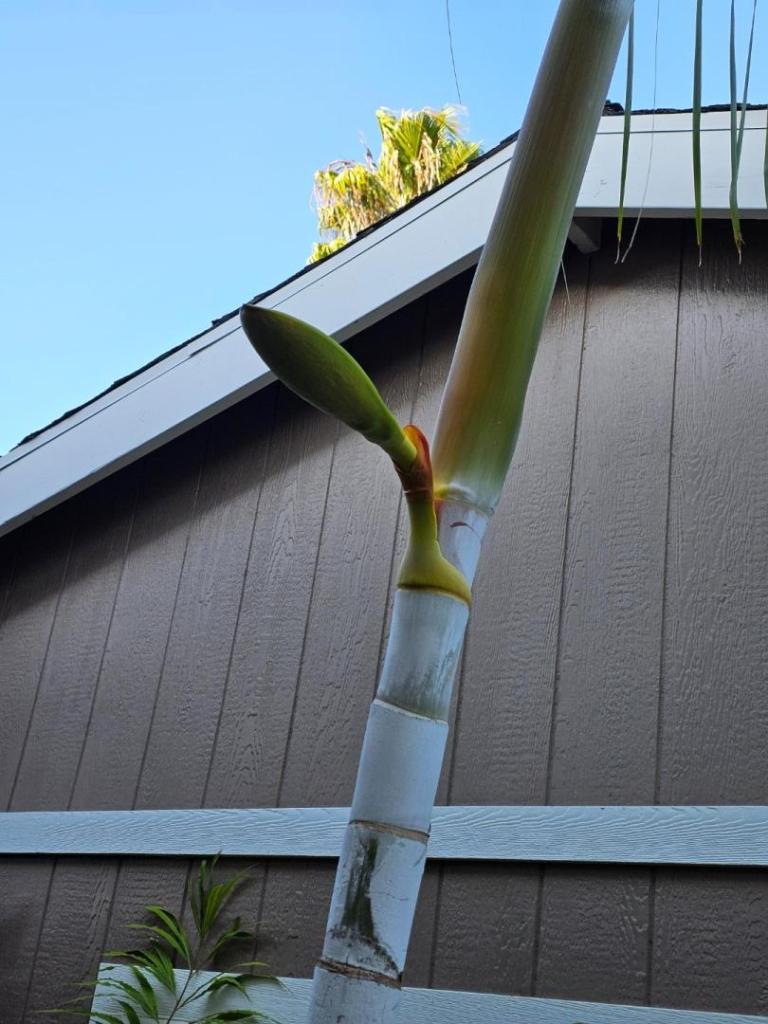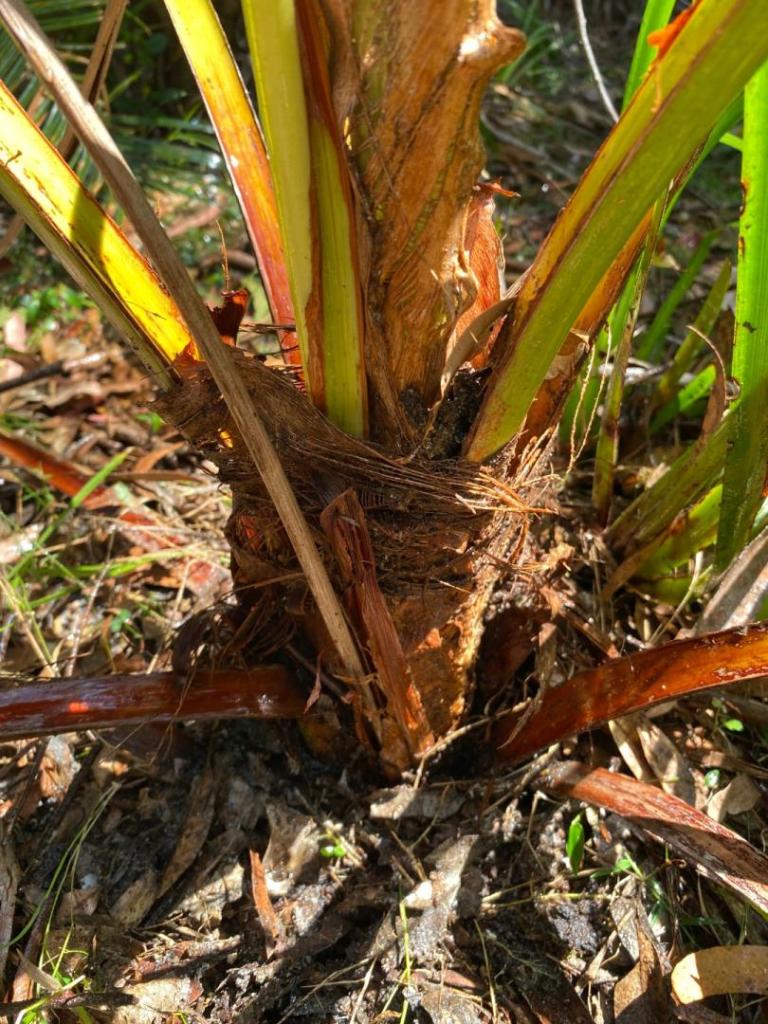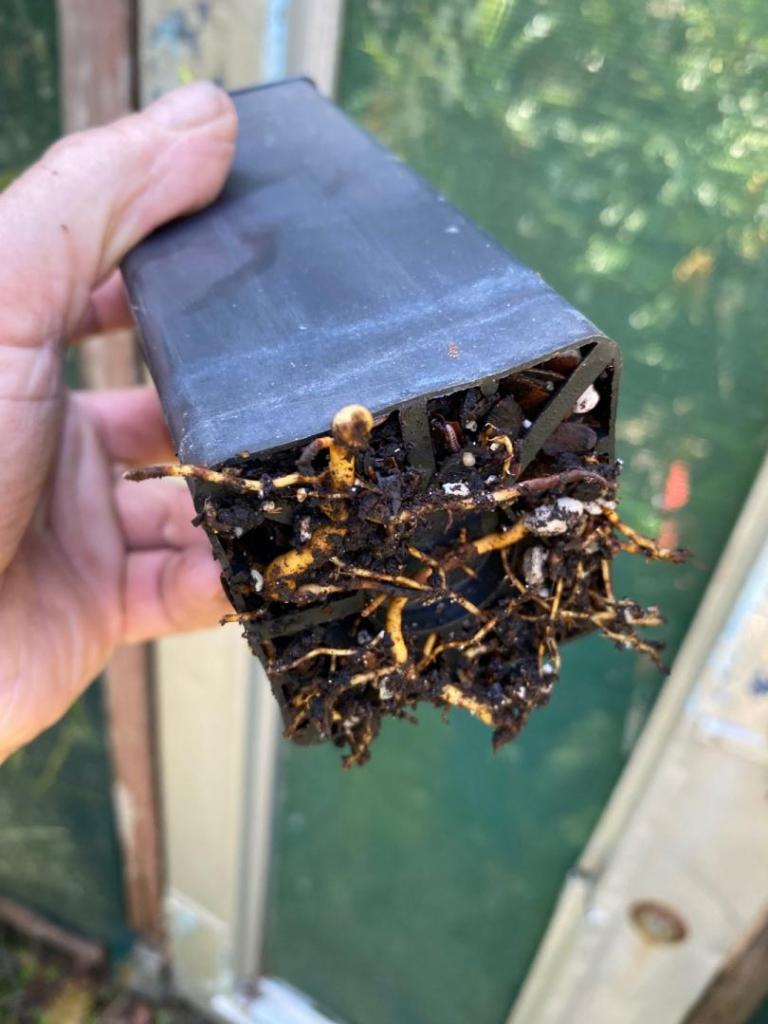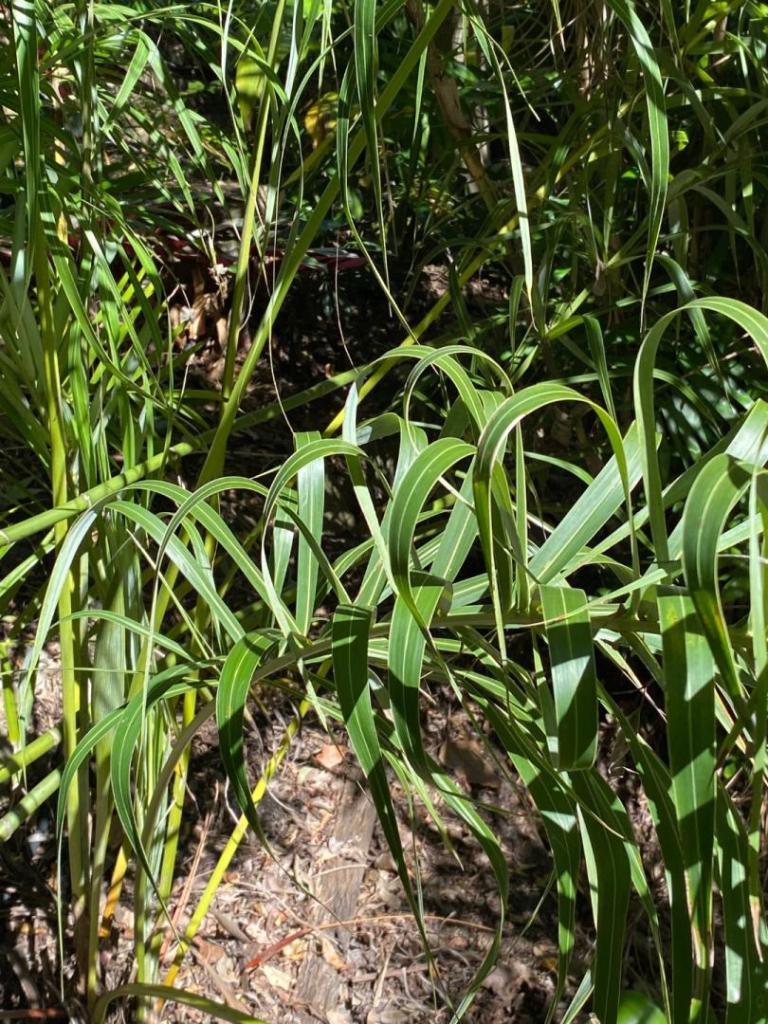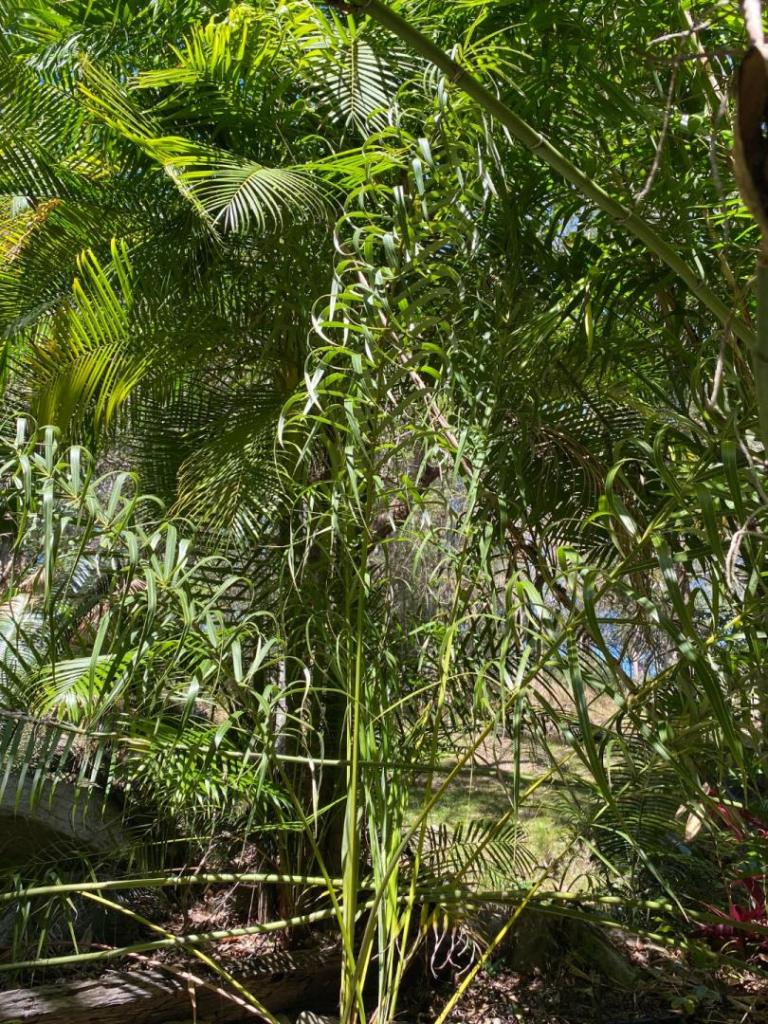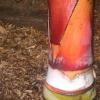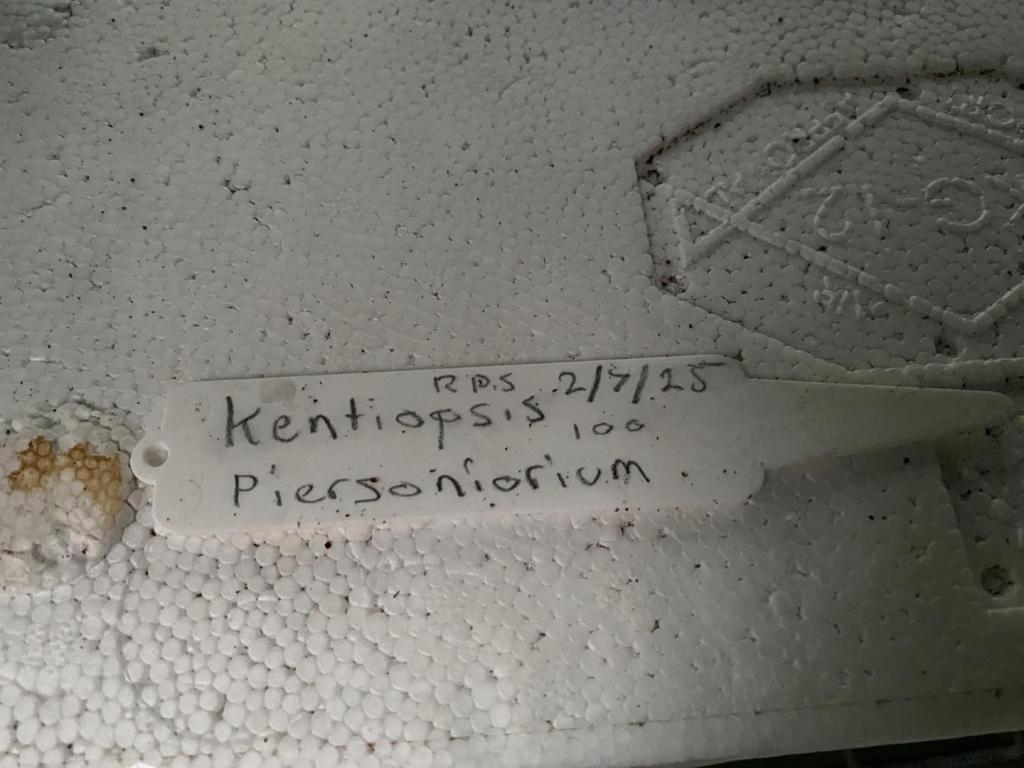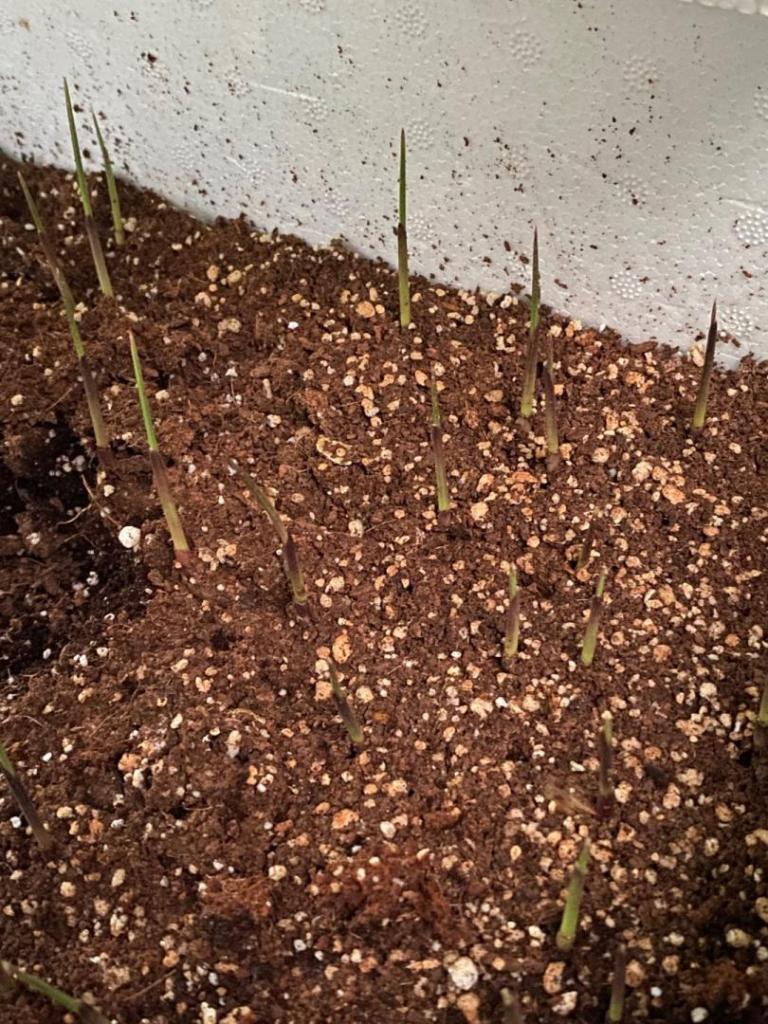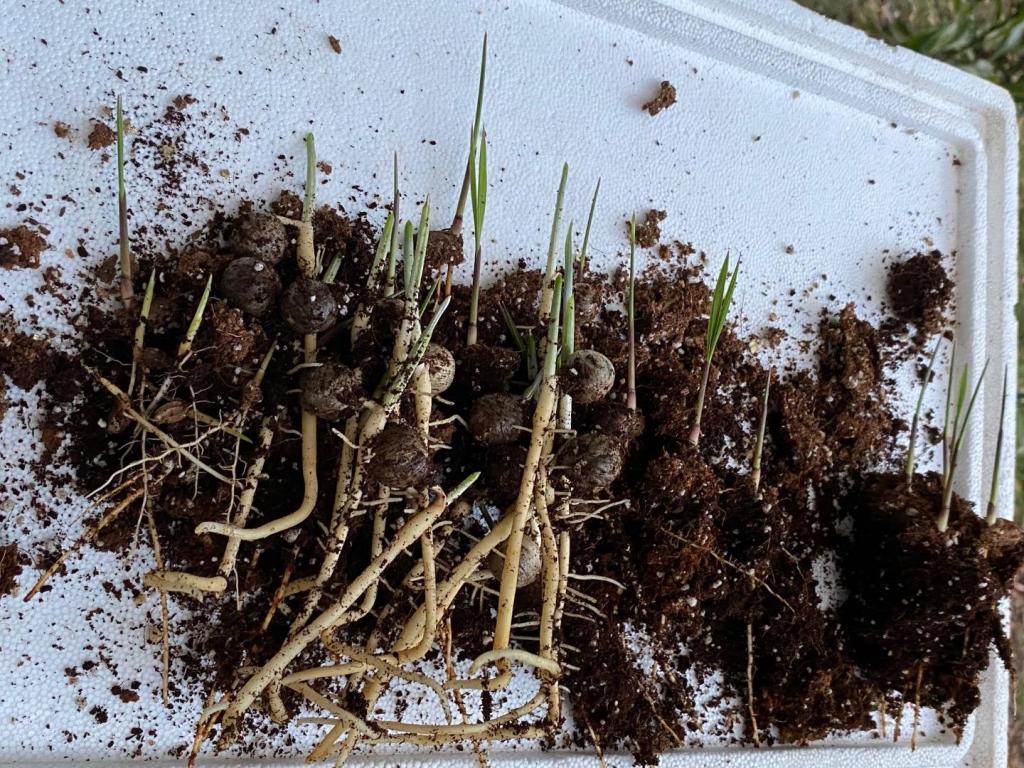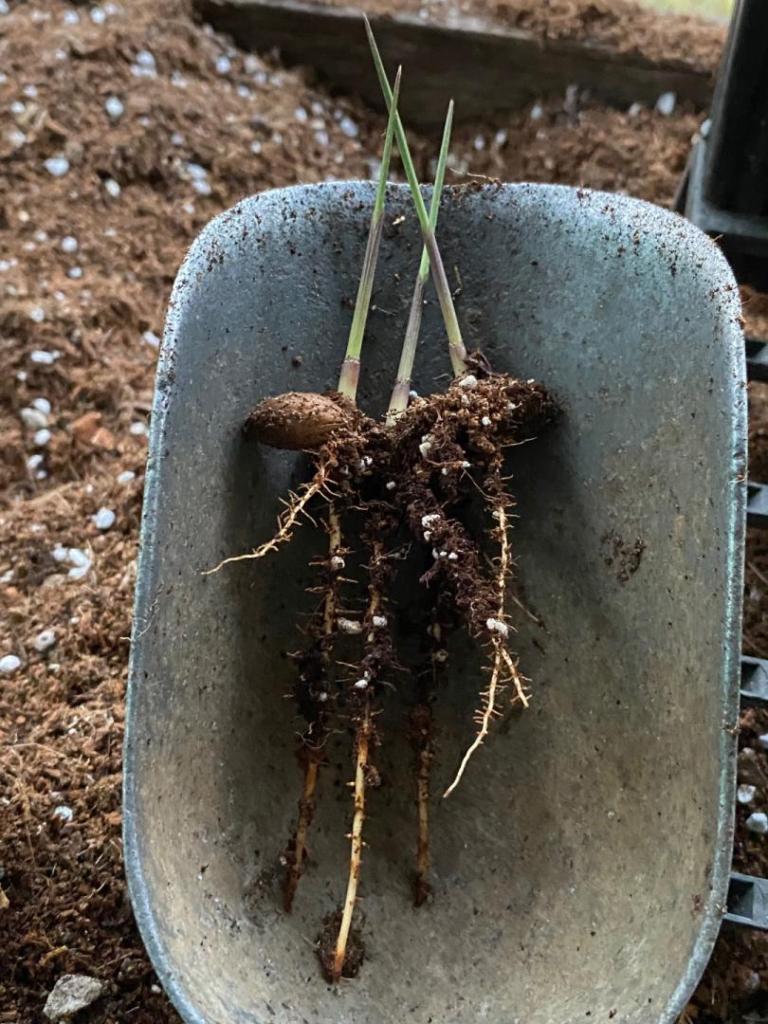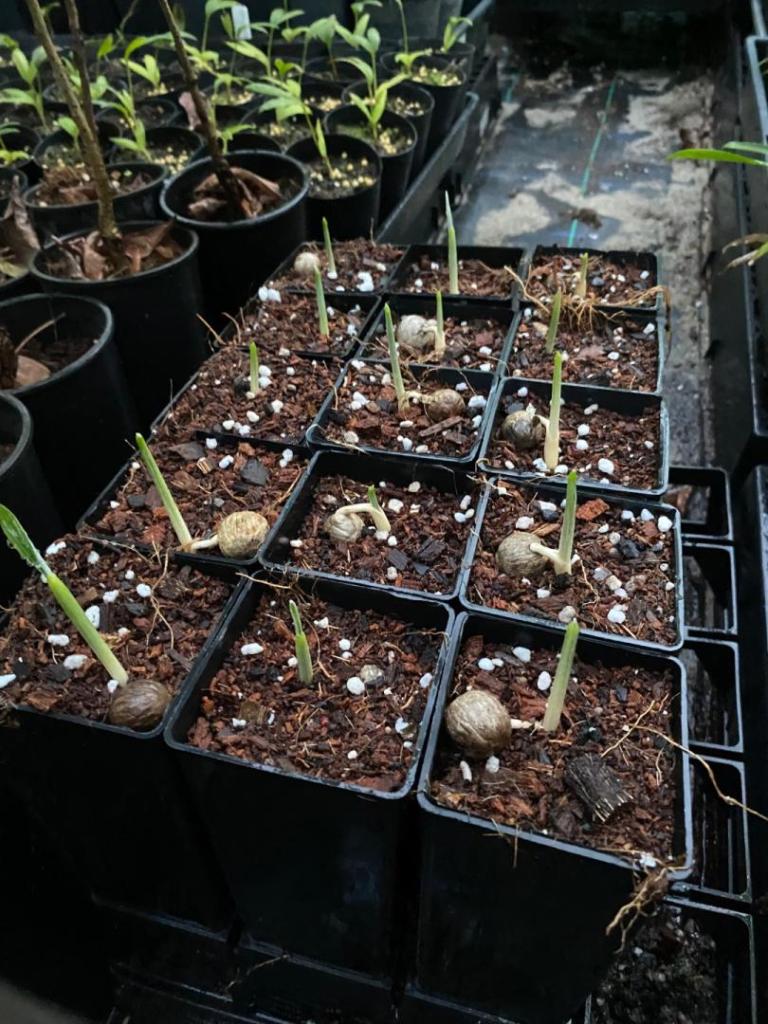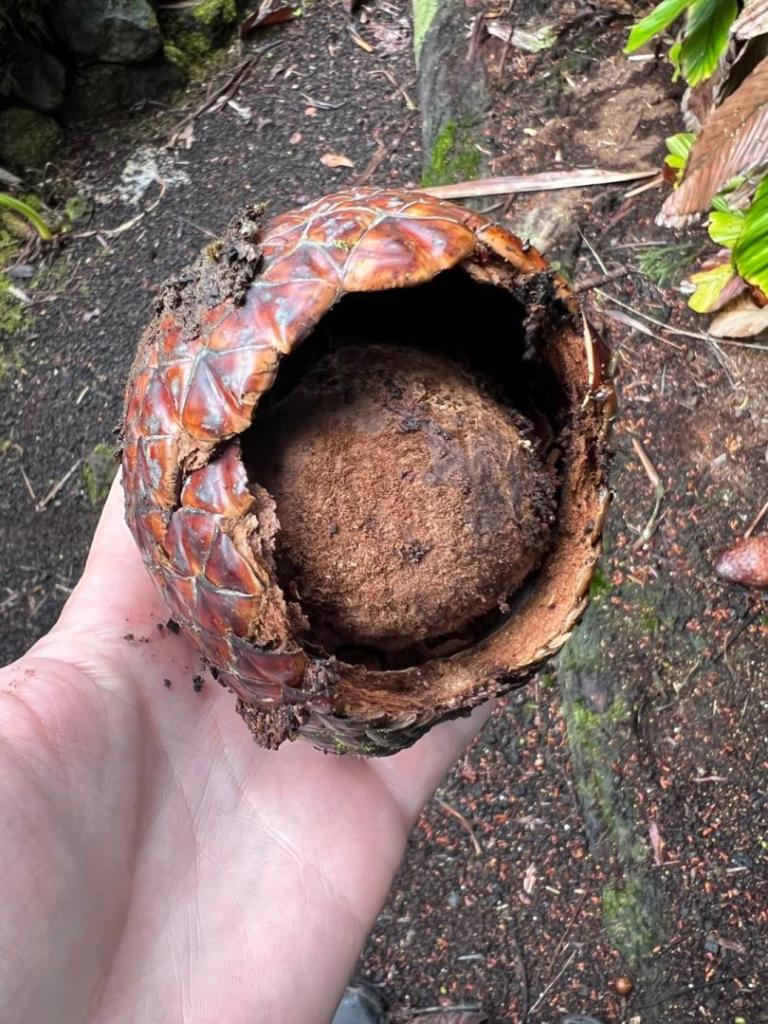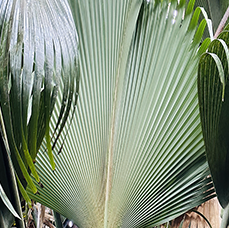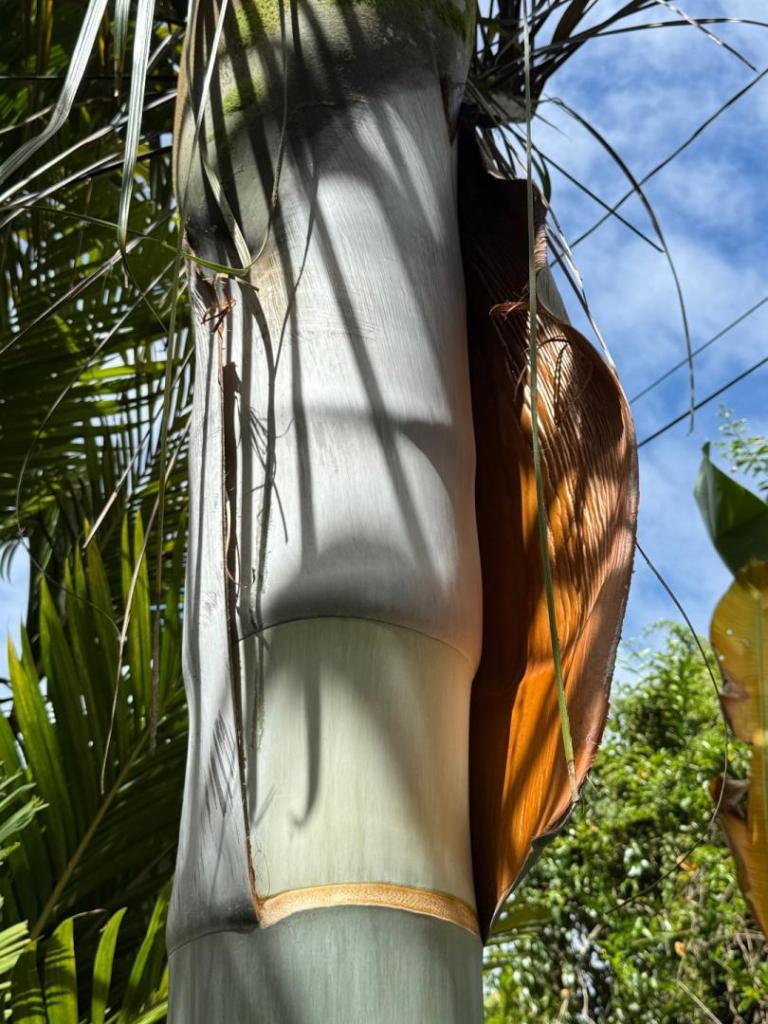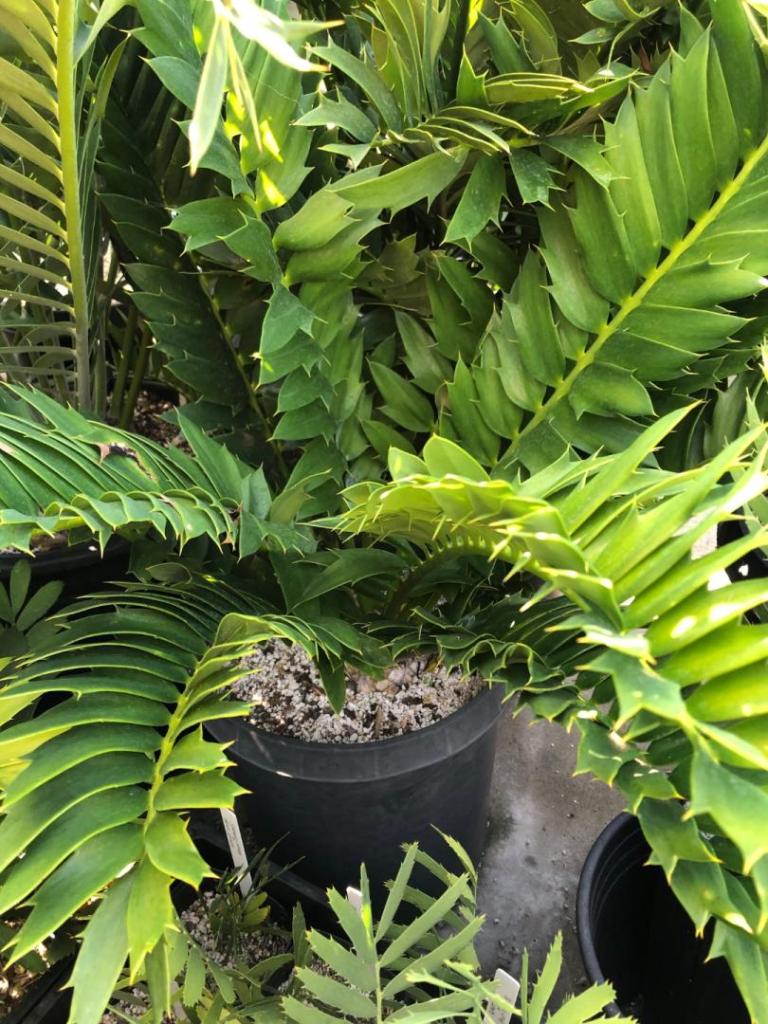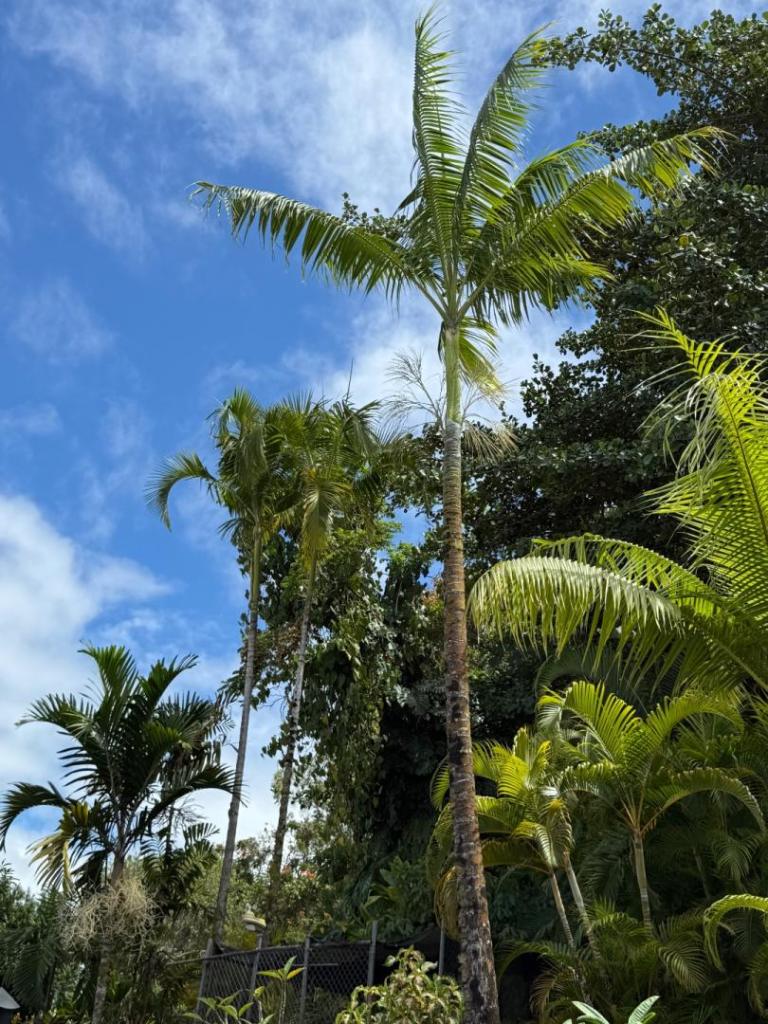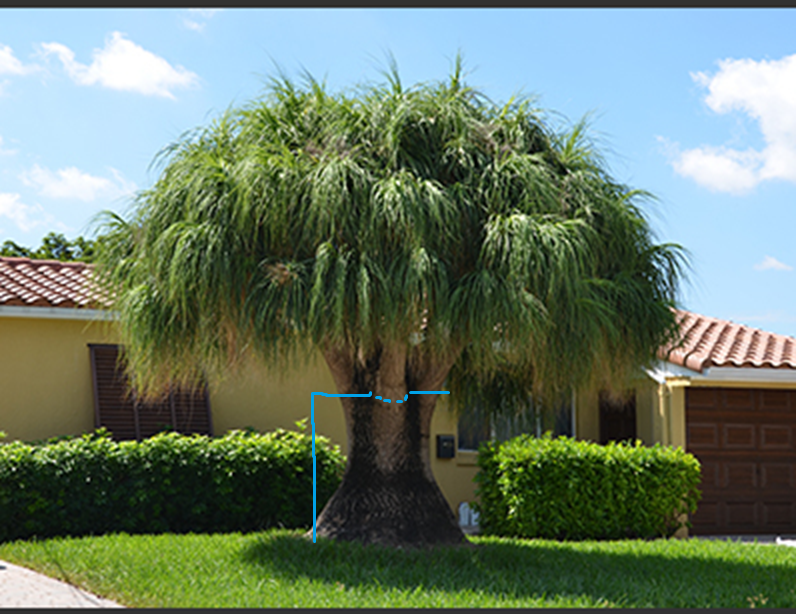Leaderboard
Popular Content
Showing content with the highest reputation on 09/12/2025 in all areas
-
7 points
-
It definitely has armed petioles. My seedlings with entire leaves haven’t yet developed them, but my one in the ground with adult pinnate fronds has developed the armed petioles. I guess they develop around when fronds start splitting. You’re right that there’s not many armed Syagrus. Here some I know of: S schizophylla S coronata S vagans S santosii S amicorum Syagrus is a fascinating genus with a lot of variability that I think gets overlooked because of the dominance of S romanzoffiana in cultivation. Wish the other species were more commonly available. Unfortunately seed seems to have short viability for many rare species; I’ve burnt a fair bit on RPS seed for only a couple of seedlings of rare Syagrus sp. By the way, I agree on the ID of the palm in the OP being S schizophylla.5 points
-
5 points
-
4 points
-
The seeds I had have been distributed. To all of us trying to germinate , hopefully the palm Gods are sending good vibes for us. I have hope for these as I saw volunteers sprouting around the parent palms. Sevan and Terry gave me permission to dig them up. A couple have already died , a few show hope . I only have 12 seeds in my little make shift germinator. We’ll see . Please post if you have success so the rest of us will have hope. I had soaked mine for about a day or so to loosen the skin off the seed. One already had a root coming out! 🤞🌴Harry4 points
-
4 points
-
4 points
-
Hahaha that’s a good one, how do you confuse an Irishman, put him in a round room, with a shovel in the corner and tell him to take his pick!🤣 Richard4 points
-
4 points
-
Been awhile since a thread for this genus of rather elegant palms from western Pacific islands. Feel free to post any images and observations you’ve experienced. I’ve got three species and five individuals growing in the garden. C. samoense is by far the more robust and for this reason, planted in the open space behind the property. Digging a hole wasn’t possible because of the shallow soil over almost solid rock, so the potted specimens were just placed on the on the surface after removing the bottom of the plastic pot. Super aggressive roots enabled them to anchor and penetrate fractures in the rock. Here are a few C. samoense photos. Tim3 points
-
3 points
-
Tracy, You hit the nail in the head. Its just a patience thing. I have only tried 3 Encephalartos pups and had success with 2 and I’m sure the other one will take as it had 2 big tubers and lots of roots. If the caudex is still firm your probably good. A couple things I do to up my odds is I wait until the pup is about softball size. The other thing I do is hit the pup and the mother plant where the cut was made with a paste of daconil and root hormone. I mix it together with a cheap paint brush and paint it on. The longest one to root out for me took a year and a half! Funny story is I lived on a canyon at the time and I had a Horridus I had been trying to root out for a year and a half. My patience ran out and I was ready to launch it into the canyon! I pulled it out of the pot and had my arm cocked back to throw it when I saw a little nub of a yellow white root on it. I potted it up and it threw leaves one week later lol🤣.3 points
-
for the fruit that are completely ripe (dark brown), the answer is a resounding ‘no’, mostly because there is nothing to eat: however, you piqued my curiosity so i cracked open the one from earlier, and there is definitely a coconut-meat-esque layer in there i did the foragers test for toxicity and edibility, very bland, smells and tastes like cabbage i think this will make me readjust my views, the dark brown ones i now consider to be “over ripe”, and these ones are “nearly ripe / ripe” if a few days go by and i dont post, put “Metroxylon got em!” on the memorial haha3 points
-
My next task is to germinate Sabal minor. They are beautiful palm trees.3 points
-
I'm finding Phoenix to be pretty fast growers in Texas, much faster than I experienced previously. I have noticed CIDP here have narrow trunks (relatively) compared to the slow growing ones in Oregon, the same as Trachycarpus. I have a sylvestris and canariensis in the ground that have doubled to tripled in a few months. I do have one small Phoenix acaualis that is still strap leaf that is slow growing, but they are a dwarf.3 points
-
That sort of look to the leaf to me is too much water/fungal issues. Small needles sometimes just up and die. I planted 5 needle palms last year maybe a bit bigger than yours. They all were doing well and actively growing. Mid summer one turned crispy like that, spear pulled a couple days later and never recovered. My remaining four, will often have the offsets die and spear pull on me. No idea why.3 points
-
3 points
-
3 points
-
Yes you cannot really tell, obviously cutting one in half is a good indication. Some varieties of seeds are difficult to germinate and have a low rate for germination. So if you get ten seeds you may get nothing even though are viable, so you may need 100 seeds to get ten to germinate, it’s a catch 20, dammed if you do dammed if you don’t!3 points
-
The trick with testing for viable seeds is, pick em fresh, and only buy newly listed seeds. Also a good supplier who’s on your side. And even then theres no guarantees with what germinates. But as others above have said is correct!3 points
-
I have a huge clump of sefritzii that are leaning over and touching the ground none have aerial layered yet, but it won’t surprise me if they do. You should try walking in Australian bush , you will do more than fall over, get bitten, scratched poked and heaven forbid if you walk into an area thats got some illegal farming activity.3 points
-
The big ones we get are: New account posts cursory reply to get approved (sometimes they do, sometimes they don't). A few days later they post another post with a SPAM link in it. Similar to above, an introductory post to get approved and then they quote a lengthy post and hide a SPAM link in it somewhere. Account gets registered and starts messaging people (A.K.A. the topic of this post). Once in a while, they just go straight for the jugular and post SPAM right away. Either way, it's a full-time volunteer job to keep things clean.3 points
-
I love this post, thank you so much @PAPalmtrees The International Palm Society, highly values, our affiliate chapters and have historically supported over 30 around the world. It’s a mutually beneficial relationship; the IPS actually has a committee, chaired by @Chuck M PSST, working directly with our international partners. looking forward to exploring further. andy3 points
-
No one has started one. It would be awesome to see everyone up that way get together. I moved this to the Local Chapter Affiliates section so, hopefully, it will be posted into existence.3 points
-
Sometimes Chamadoreas grow up, then fall over, root again and grow up straight. Kinda like walking through the forest.3 points
-
3 points
-
Luck of the Irish they say. My grandmothers side of the family is an O’Shea and that’s definitely an Irish name.3 points
-
Yep I put a dead stick in the ground last month and it’s got new leaves already. 🤣3 points
-
Definitely Chrysalidocarpus. Looks to be in the mananjarensis/malcomberi/oropedionis/pilulifer complex but I think the markings aren’t strong enough to be mananjarensis. C oropedionis is a good guess I think. Could maybe be C malcomberi, but it already looks very plumose and I think malcomberi take a while to develop that trait.3 points
-
A. salgarense ((top right In photo) with ambitions of taking over the kitchen table. I can see these becoming room sized leaves, in time. Not to troll and start an internet aroid war, but is there really a difference between A. salgarense and A. decipiens? Asking for a friend 😀 —wondering if it’s some intricate detail that only the botanists could see; and yet, everyone else thinks they’re both the same species. I have no business growing these behemoths indoors as houseplants, lol, but they are just so impressive. Looking at my seedling decipiens with increasingly large leaves, reminds me of watching a clumsy tiger cub. Tiny, fluffy creature with paws way too big for its size; always aware of just how imposing it will someday become.3 points
-
3 points
-
About a week ago I’m not sure that this seedling would have been in my top 5 but after I planted it a couple of days ago, it’s the palm I’m going to cherish the most. I’ll be pampering it and really rooting for it to make it since it’s from Mercury (Palmad Merc). From Sydney to Cali. Basselinia pseudovelutina ❤️3 points
-
3 points
-
3 points
-
3 points
-
Question for the group, see attached pictures below. I planted this needle palm in March and it’s done great all season until about a week ago. It looks like the leaves are drying out very quickly. It gets a deep watering 1/2 times per week and also gets some water from the sprinkler system twice per week. The ground is consistently moist but not soggy. The soil drains very well and everything around it is growing amazingly, even the agave next to it which oddly doesn’t hate all the water. There are two other needle palms in ground to the left in same conditions in the ground since last spring and summer that are doing great. The holly fern by it seems very happy too. These are on the west side of the house with a large red oak over the yard so they get dappled light throughout the day and then a few hours of full sun at the end of the day. In peak summer and heat the sun never bothered it and doesn’t bother the other two. So far the spear looks ok and the sucker looks ok. Zone 8a west Texas. I’m baffled.2 points
-
2 points
-
I pulled several pups off an Encephalartos eugene-maraisii in September two years ago. One has flushed twice, a few other have flushed once and some have not flushed yet. All of them were planted in pots with a lots of pumice for good drainage. I pulled one from its pot a few weeks ago to see if there was any issues but everything looked good and it even has some new root growth but has not flushed since being seperated from the mother plant two years ago. These are the pups I pulled two years ago.2 points
-
One of the goals of a potential Carolina Palm Society would be the creation of events within NC. I'd like to shorten the drive for the folks in NC. Also, the palm scene in central & eastern NC is considerably different from the palm scene in southeast GA. A palm society in North Carolina would capture the widely varying climate of the state, as a (sub)tropical garden in Raleigh can look vastly different from a garden in Hatteras. The differences become even greater west of the Piedmont. The "North Carolina Palm Society" might be a more fitting name in this case, as I wasn't aware of the Southeastern Palm Society.2 points
-
Drive to Mississippi and get some cats from me. I'm not saying it'll work, but every cat comes with 2 free cats. I'll even tell you which ones are friendly and which ones are super feral. It's a bargain.2 points
-
I'm honestly surprised that a Carolina Palm Society hasn't been created by now. Many forum members are from NC & SC. But we'd love to be the ones to get a chapter established. I already have a few palmy meeting places in mind2 points
-
How would one go about starting a local chapter? @NC_Palms & I are interested in starting a Carolina Palm Society.2 points
-
Tim syagrus romanzoffiana is very resistant to cold, this explains why it is widely cultivated even in areas where other syagrus cannot resist, I have had about ten species of syagrus, but in January 2017 we had a record cold never recorded before, all dead only the romanzoffiana alive and in excellent health2 points
-
How scary, Harry. There's a great Celtic ancestral spirit here. You are the living soul of all our ancestors. And who said Celtia isn't still alive? From Celtia, nations arose. I took a genetic test with Family Tree DNA and my matches are Celtic. I share DNA with people from all over Europe: but my most refined DNA is shared with people from Switzerland, Sweden, England, etc. The more people test their DNA, the more complete the genetic bank of a race becomes.2 points
-
I had to start tying up my huge Seifritzi with a line running from the Lutescens to the single trunk Tepejelote. I’ve had that palm for over 30 years , 27 years in the ground . Interesting that some stem are small diameter and others are much larger diameter . It is still sending up new stems. If it weren’t tied up , it would be running sideways for sure I am Northern Irish , from one of the border clans in Scotland , the Johnston/e clan. The Johnstons crossed into Ireland in the 17th century . My grandfather was a Johnston. Mum was Simmonds / Johnston. Full on Northern Irish from Belfast . I am first gen American . The Celtic roots run deep! Harry2 points
-
The last week of august I applied a 50-pound bag of lawn “winterizer” fertilizer, roughly 40-0-8 and added a 5 pound bag of epsom salts (magnesium). It really greened up several of my palms and stimulated growth in the last couple weeks.2 points
-
Very beautiful palm tree, my friend. It will become a great treasure.2 points
-
2 points
-
2 points
-
Never been much of a fan of the " low branchers " / Specimens where branching starts within 0 - 4ft of the trunk base = ..Too ordinary looking / Dime a dozen, imo.. This one instantly caught my eye to it when i'd found it and is exactly how i'd train any i were growing.. Might look kind of gangly starting off, but, trunk and branches will fatten up over time..2 points


